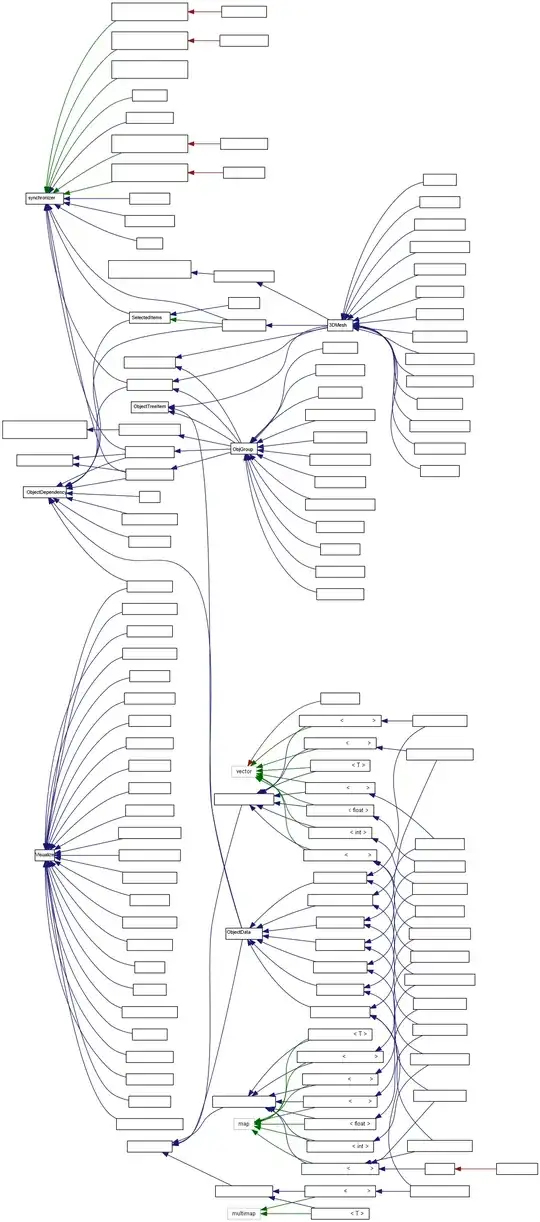Our team has recently inherited a relatively large project from another company (~250k lines). It was developed using C++Builder and we intend to port the Ui side to Qt. Most of the Ui code is separate from the business logic (yay!) but the logic side is quite a mess.
There is a lot of diamond inheritance going on (virtual inheritance thankfully) but it makes understanding the code quite difficult to do.
We've got very little documentation to go on, what's there is out of date (comments included).
I generated class diagrams using Doxygen, here's the most complex one (I had to remove most of the class names but kept some of the more important ones and kept the standard C++ data types and std classes, yes, they inherit from std)

So far we've been able to convert the base program to Qt and we're at a point where we can start converting the program's functionality bit by bit. Problem is, is it worth it long term? We would like to be maintaining this software as our own long term.
Is there a general approach we should take to untangling this kind of inheritance mess or should we simply redesign from scratch and only keep bits and pieces of the existing code as we go?
EDIT: Some more info
Zavior posted a link to an article about why we should not start from scratch but Ptolemy also brought up some good questions and I'd like to add some information about our situation.
The program we have is not 'bug free.' There are known issues that users have workarounds for most. There is no 'list' of these issues, that is currently being compiled by talking to all the existing users one by one as they tend to keep things to themselves.
We are all new developers to this project. Our only resource is a developer who started working on the project about half-way through its lifetime. He is available via e-mail/chat mostly. He has also put together some documentation on how some parts of the code work.
The program has only been used as an internal tool so far. We would like to make it commercially viable.
EDIT 2:
One of the most important things we want to do is have the program be in Qt. It's currently using the VCL framework from C++Builder that no one on our team is familiar with and we only have 1 license for. It's during my work porting from VCL to Qt that I found the messy code structure and question the decision to 'convert' vs redo.